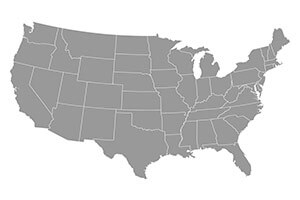
On the whole, the outlook for bees and beekeepers is positive this year. Most of our reporters have fair to good news to share about honey production and markets. We live in uncertain times, but we are not without hope. While seasonal labor is hard to get in some areas, and equipment suppliers are hard put to keep up with demand driven by new beekeepers, most of us feel fortunate to be in this industry at this time.
Northeast
After a slow start in Pennsylvania, the season kicked in and colonies built up. Honey extraction was underway in July and an average crop was expected, with clover honey leading the way. The wholesale market is up a bit, while retail sales are average.
A hot, dry June and July (following a cold spring) hurt the locust and basswood blooms in northern New York, causing the year’s honey forecast to drop by 10-20 percent. But clover and widlflower helped pick up the slack in the northwest, and mid-July rains could help the fall flow.
Farmers markets were either closed or sparsely attended due to the pandemic, hurting retail sales.
It was also very dry in New Hampshire, which brought down the basswood flow. The best production so far has been from clover, black locust, honeysuckle and staghorn sumac. Mid-July rain offered some relief, and hope for beekeepers. The early-year, COVID-related retail demand seems to have settled down heading into summer.
In Maine, the late, wet spring was followed by an abnormally hot June, causing many crops to bloom early, and thus condensing the early summer nectar flow. As in much of the region, late spring and early summer were dry, but rains finally came in mid-July.
Mideast
A Virginia correspondent reports that April and May were the “wettest on record.” Black locust and tulip poplar failed to produce, though sourwood bloomed later than usual and did better. Overall honey procuction is down by 50 percent from last year, though ground moisture lengthened the flow well into summer. Wholesale and retail markets are about normal.
It’s also been very wet in Tennessee, where production is down about 50 percent. White Dutch clover was the best producer, while tulip poplar and sourwood were very poor. Small early-season splits failed to thrive due to spotty conditions and were wiped out by hive beetles. Sales are about average for this time of year.
Kentucky’s cool spring slowed buildup and wiped out the locust and poplar blooms, but clover was helped by the early rainful. Overall the crop is up from last year but still below average.
Honey supplies were tight by early June in North Carolina, as wet weather had dampened nectar flows to that point.
Southeast
The Florida crop looks about average to 10 percent lower, with tallow and gallberry production down a bit. Retail and wholesale markets are also about average.
Production is also down in Georgia, due in part to a cold April. Black gum tupelo was down, while orange blossom honey was up. The retail market is about average, but cut-rate foreign honey continues to be a problem for our domestic wholesale market.
The Mississippi crop looks about average, led by tallow.
Alabama production is up about 10 percent, with privet and clover doing well, though blackberry was lower than usual. Plants also seem to be blooming longer this year. People are still buying more honey due to the pandemic, and Facebook is a valuable marketing tool.
Southwest
The cool spring in Louisiana hurt early crops like willow, but clover and tallow flows flows were better. Retail sales are above average, boosted by COVID.
High demand for local honey continues in New Mexico, and some sellers are offering drive-up service to facilitate social distancing. Honey production is down around 50 percent vs. last year, with Russian knapweed one of the bright spots.
Wildflower honey production has been good in Texas, while clover has been average. Demand for nucs was strong this spring. Retail demand continues to be high, and supplies are tight as a result.
East Central
As in other areas, Wisconsin’s basswood and black locust blooms were compromised by an overly wet spring, which also slowed colony buildup and may have contributed to an increase in nosema. But colonies caught up by late spring and collected good quantities of honey from ladino and white clover. Cranberry bloom was late but progressed will in the summer heat and humidity. Retail demand continues strong.
Illinois has seen a good year for honey production, due in part to what a reporter near Chicago called “a perfect amount of rain. … Clover is still going [in mid-July], I have never had a year in 20 years where we got this much foundation drawn and filled.” The early dandelion and locust flows were also good. Local retail sales have been average, and wholesale better than usual.
Michigan honey production is up, due to a combination of good colony buildup and adequate spring rain resulting in an extended nectar flow. The basswood bloom was poor, but clover more than made up for it. Strong supermarket sales are boosting the wholesale market.
Good moisture levels have also boosted production in Indiana. Clover has led the way, again making up for a poor locust bloom. Retail demand continues to be good.
Much of Ohio saw good weather in June, and excellent nectar flows from such diverse sources as basswood, milkweed and birdsfoot trefoil, which has been spreading rapidly in parts of the state.
West Central
Northeastern Kansas had well-timed rains, and honey production is estimated to be up ….


